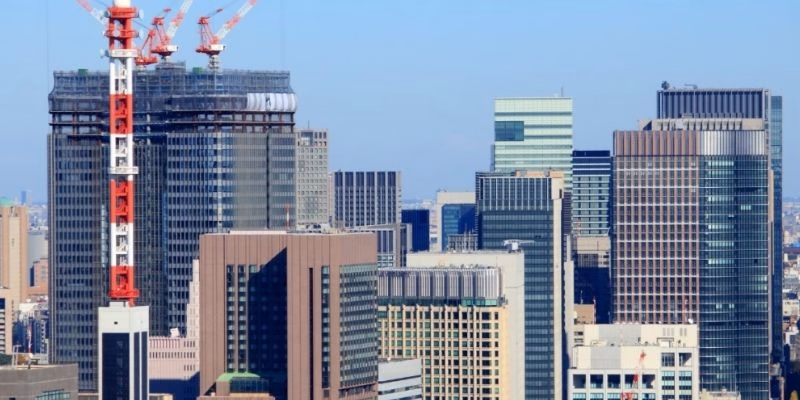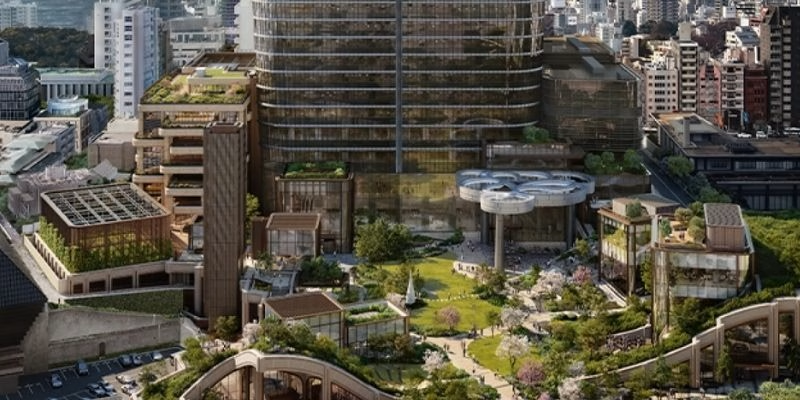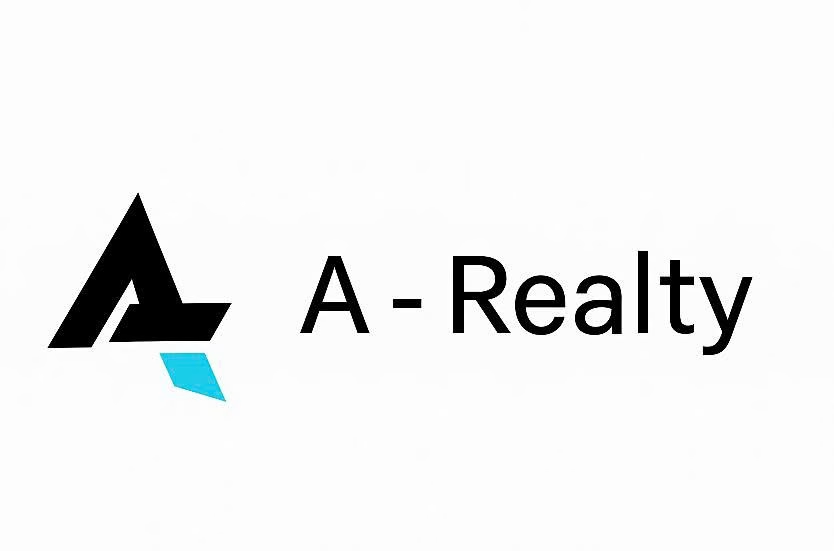The Tokyo rental market is in a period of accelerated and structurally sound appreciation. This demands a highly sophisticated strategy. A data-driven approach is necessary from all international participants. For expatriates, multinational corporate transferees, and global investors, understanding the detailed forecasts for 2026-2027 is crucial. It is essential for achieving financial and logistical success when seeking high-quality apartments in Tokyo. Analytical models confirm that precise preparation is essential. Prompt action is also needed. Additionally, an informed strategy is non-negotiable for successfully securing competitive apartments for rent in Tokyo, Japan. This is amidst rising demand and tightening supply.
Data-Driven Tokyo Rental Market Trends and Forecast Methodology (2026-2027 Outlook)
Market forces are driving the residential leasing sector across Tokyo’s 23 wards into a robust upward trajectory, resulting in significant and sustained rental price appreciation. This comprehensive forecast regarding Tokyo Rental Market Trends is based on a rigorous analytical methodology. It combines proven historical performance data with four quantified, forward-looking macroeconomic factors.
The Forecasting Model: Integrating History and Macroeconomics
The 2026–2027 Tokyo rental forecast is based on a hybrid prediction model. This model combines long-term data with key economic factors. It provides a realistic and comprehensive outlook.
Historical Foundation (CAGR):
The model starts with the Compound Annual Growth Rate (CAGR). This is calculated from 41 quarters of official data (Q1 2015–Q1 2025). The data comes from the East Japan Real Estate Transaction Organization. This provides a reliable growth baseline for each ward—for example, Chiyoda Ward: 2.58% per year, reflecting consistent premium stability.
External Economic Drivers (Four Forces):
To capture current market dynamics, four macroeconomic factors are applied to adjust the historical CAGR:
- Inflation (+2.0%) – Reflects rising construction and labor costs, increasing rental yields.
- Interest Rates (–0.5%) – Anticipated BOJ rate normalization slightly reduces growth.
- Supply & Demand (+0.3%–1.0%) – Persistent supply shortages and limited land boost rents.
- Foreign Demand (+0.0%–0.5%) – Ongoing inflow of global capital and expats adds premium pressure in core wards.
These elements are linearly integrated to derive an Overall Growth Rate. For instance, Chiyoda Ward’s projection:
2.58% (CAGR) + 2.0% (Inflation) – 0.5% (Interest) + 1.0% (Supply-Demand) + 0.5% (Foreign Demand) = 5.58% total annual growth.
This compounded rate is applied to Q1 2025 rental figures. It helps forecast Q1 2026 and Q1 2027 rents. This approach offers a data-driven and economically grounded prediction.

Detailed Projected Rental Growth by Market Segment (Q1 2027 Forecast)
The 23 wards are meticulously segmented into five distinct groups. This grouping reflects the synergistic effects of historical growth (CAGR). It also considers the differentiated impact of the external economic factors. This provides precise guidance for budgeting for rent in Tokyo over the next two years.
Group 1: High-Value Core Wards (Chiyoda, Chuo, Minato, Shibuya)
These Central Five Wards (C5W) are at the absolute apex of the Tokyo rental market. Average rents in the C5W reached ¥5,524/m² in Q1 2025. They are projected to experience the highest and most stable growth rates, all firmly above the 5.0% threshold annually.
- Overall Growth Rate: 5.0% to 6.3% per annum.
- Q1 2025 Rent Range: ¥4,863 to ¥5,367/m² (per square meter).
- Defining Features: These wards are the established epicenters for international finance, diplomatic missions, and luxury retail. The premium is substantial; for instance, a 1K apartment in Minato-ku averages around ¥119,600/month (¥1.6 million JPY/year), while a similar unit in Adachi-ku averages ¥61,000/month (East Japan REBO, Q1 2025).
- Forecasted Example: Chiyoda Ward is projected to increase from ¥5,041/m² in Q1 2025 to ¥5,403/m² by Q1 2027. This consistent appreciation confirms the stability of premium assets. These locations are primary targets for high-budget searches for luxury apartments in Tokyo. For more on C5W listings, visit our Core Tokyo Properties.
Group 2: Upper-Middle Value Wards (Shinjuku, Meguro, Shinagawa, Bunkyo, Taito)
These wards offer a premium balance of urban convenience, extensive transportation networks, and strong local economies. They are projecting strong, stable growth rates, as they reliably position themselves as superior alternatives to the Core Wards.
- Overall Growth Rate: 4.8% to 5.4% per annum.
- Q1 2025 Rent Range: ¥3,882 to ¥4,283/m².
- Defining Features: Strong growth in Taito Ward (5.42%) is notable, driven by revitalized tourism and excellent connectivity (Ueno, Asakusa). Shinjuku remains an essential hub for commuters. A typical 1K apartment in Shinjuku-ku averages around ¥88,400/month (East Japan REBO, Q1 2025).
- Forecasted Example: Shinjuku Ward is projected to rise from ¥4,283/m² in Q1 2025 to ¥4,568/m² by Q1 2027. This consistent appreciation solidifies its status as a non-negotiable hub for many international business operations. It secures long-term demand for quality apartments for rent in Tokyo, Japan.
Group 3: Mid-Tier Value Wards (Koto, Sumida, Nakano, Setagaya, Toshima)
These wards are the best option for many mid-level expatriate assignments. They are ideal for families who prioritize space and value. Substantial, ongoing urban renewal projects and significant improvements in residential convenience structurally underpin their growth, achieving this growth without the Core Ward premium.
- Overall Growth Rate: 4.0% to 5.3% per annum.
- Q1 2025 Rent Range: ¥3,545 to ¥3,776/m².
- Defining Features: Sumida Ward is a prime case, with a predicted growth rate of 5.32%, benefiting from major infrastructural investments. Setagaya maintains its appeal for families, with 1K apartments averaging approximately ¥72,200/month (East Japan REBO, Q1 2025).
- Forecasted Example: Koto Ward is projected to reach ¥3,998/m² by Q1 2027, up from ¥3,776/m² in Q1 2025. This growth signals that even mid-tier segments are rapidly approaching the next price threshold. It underscores the scarcity across the overall Tokyo rental market. Explore mid-range family listings in our Setagaya and Koto Portfolio.
Group 4: Established Residential Wards (Suginami, Ota, Kita, Arakawa)
These are quiet, mature residential areas offering excellent stability and a high quality of life. Their Overall Growth Rates are the lowest. However, the appreciation is reliable and consistent. Stable domestic demand and proximity to the outer JR lines primarily drive it.
- Overall Growth Rate: 3.2% to 4.5% per annum.
- Q1 2025 Rent Range: ¥3,269 to ¥3,378/m².
- Defining Features: These areas attract long-term residents and families seeking relative tranquility. For example, a 1K unit in Ota-ku averages around ¥74,800/month (East Japan REBO, Q1 2025).
- Forecasted Example: Suginami Ward is expected to rise from ¥3,369/m² to ¥3,508/m² by Q1 2027. This growth demonstrates a foundational stability. Such stability makes them excellent choices for long-term value.
Group 5: Emerging High-Growth Value Wards (Itabashi, Nerima, Edogawa, Katsushika, Adachi)
Despite maintaining the lowest starting rents, market forecasts project the wards to show surprisingly high Overall Growth Rates.. In some instances, they may surpass Group 4. This is due to a high historical CAGR and significant public investment.
- Overall Growth Rate: 3.3% to 4.8% per annum.
- Q1 2025 Rent Range: ¥2,552 to ¥2,986/m².
- Defining Features: They offer the single best opportunity for maximizing living space per Yen spent. A 1K apartment in Adachi-ku averages ¥61,000/month (East Japan REBO, Q1 2025), a price point significantly lower than the C5W.
- Forecasted Example: Katsushika Ward is projected to increase from ¥2,797/m² to ¥2,969/m² by Q1 2027. This high-growth potential confirms these wards as strategic entry points for budget-conscious international residents. Find your next apartment in these affordable areas via our Value Ward Listings.

High Initial Costs for Apartments for Rent in Tokyo, Japan
A fundamental requirement for any international resident navigating Tokyo Rental Market Trends is the acceptance and rigorous budgeting for the high, compulsory upfront payments. These initial costs are a fixed, non-negotiable feature of the Japanese leasing system and typically amount to 4.5 to 6 times the advertised monthly rent.
Essential Components of the Upfront Financial Commitment
Understanding each of these non-negotiable fees is crucial. Accurately budgeting for them is vital to achieve financial security. This also ensures a smooth application process.
- Key Money (Reikin – 礼金): This is a non-refundable “gratitude payment,” typically equivalent to one to two months’ rent. While many listings are reikin-nashi, high-demand, prestigious properties, particularly in areas like Azabu-Juban and Hiroo, frequently still mandate this fee.
- Security Deposit (Shikikin – 敷金): This refundable deposit is usually one to two months’ rent. The landlord holds it against potential property damage and also covers any arrears in rent in Tokyo with it.Tenants must realistically anticipate deductions for professional cleaning services and restoration costs upon contract termination.
- Guarantor Company Fee: Securing a personal Japanese guarantor is extremely difficult for foreign residents. Therefore, the use of a guarantor company is mandatory. The initial fee is 50% to 100% of one month’s rent. There are also minor annual renewal fees (GTN Finance, 2025).
A Detailed Financial Breakdown: For a competitive ¥200,000/month apartment, the minimum initial outlay could be significant. It could easily exceed ¥1,000,000, which is equivalent to 5 months’ rent. This includes Key Money (¥200,000), Deposit (¥200,000), and Agency Fee (¥220,000). There is also a 50% Guarantor Fee (¥100,000). Additionally, you will need to pay the first month’s rent and various mandatory insurance/lock fees.

A-Realty: Your Specialist Guide to the 2026-2027 Tokyo Market
Navigating the intricacies of Japanese leasing poses significant, time-consuming hurdles for international residents. It includes opaque screening criteria, language barriers, and the need for specialized documentation. A-Realty is designed with purpose. It eliminates these barriers entirely. This ensures our international clientele secure suitable apartments in Tokyo efficiently, confidently, and strategically, even amidst the fiercely competitive Tokyo Rental Market Trends of 2026-2027.
Our professional services are precisely calibrated. They address the unique challenges faced by foreign tenants. These tenants experience high stakes in the ascending Tokyo rental market.
- Access to Exclusive Foreigner-Friendly Listings: We maintain an exclusive portfolio of properties. Landlords have a verified and explicit willingness to accept foreign applications. This strategic advantage eliminates the typical market bias. It dramatically increases the practical availability of quality properties. This includes historically restrictive, high-demand areas. We have successfully placed clients in luxury units in Shirokanedai (Minato-ku), Naka-Meguro (Meguro-ku), and Kagurazaka (Shinjuku-ku).
- End-to-End Multilingual and Legal Support: Our expert agents provide full, uncompromising support in English. We also support other key languages. We offer this support through every phase. We cover everything from initial viewing to contract execution. We meticulously translate and explain complex legal terms, skillfully negotiate move-in terms, and provide complete transparency regarding all initial fees. We guarantee that our clients will achieve a complete, legal understanding of their tenancy agreement before applying any signature.
- Guarantor Solutions Integration: A-Realty addresses the most critical requirement for apartments for rent in Tokyo, Japan. We offer seamless, guaranteed integration with major, trusted Japanese guarantor companies. We fully manage the application and approval process with these providers. This simplifies the most crucial step for application success. It also ensures perfect alignment with the landlord’s rigid expectations.
Your Next Step Starts Here
The detailed Tokyo rental market trends for 2026-2027 show that competition will only intensify. Additionally, rent in Tokyo will continue its climb. Securing a desirable, well-located, and financially sound residence in this demanding environment is fundamentally contingent upon strategic and specialist guidance. Do not allow the complexities of Japanese leasing customs to hinder your relocation. Do not let high market competition restrict your housing options.
Contact A-Realty Today for a dedicated, in-depth consultation with a specialized expatriate housing consultant. Click here for immediate and private access to our exclusive listings. These listings are pre-vetted and include foreigner-friendly apartments for rent in Tokyo, Japan. Secure your place in the capital before the market shifts further.





Leave a Reply